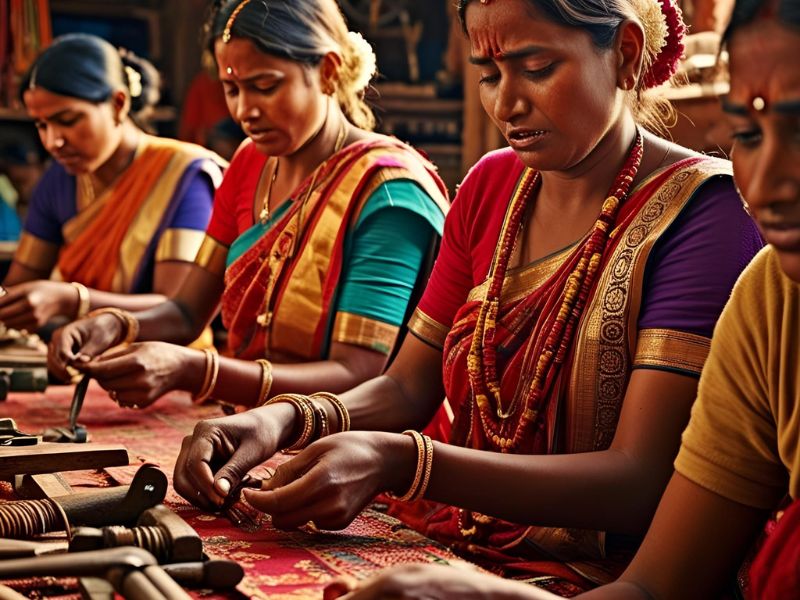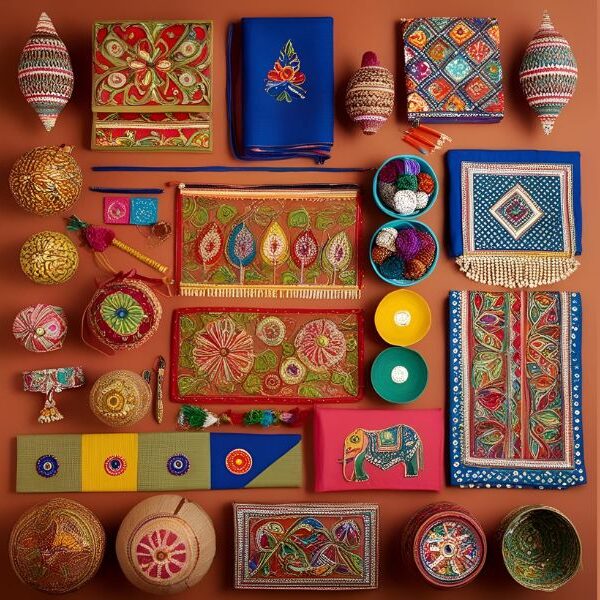India is often celebrated as a land of vibrant culture, deep-rooted traditions, and extraordinary craftsmanship. With over 3,000 craft forms and millions of skilled artisans across the country, the Indian craft sector holds immense cultural and economic value. However, despite its vast potential, the sector struggles to keep up with evolving consumer demands, global competition, and modern retail dynamics. One of the most significant reasons for this lag is the inadequate integration of design intervention in the craft ecosystem.
This blog explores how the Indian craft sector is lacking behind because of design intervention, what that truly means, and how it can be addressed to uplift one of India’s oldest industries.

Understanding Design Intervention in Crafts
Design intervention refers to the process of introducing modern design concepts, methods, and thinking into traditional practices to make them more relevant, accessible, and marketable in today’s context. It’s not about replacing traditional elements but about reimagining craft in ways that retain authenticity while meeting current aesthetic and functional needs.
In the context of Indian crafts, design intervention could mean:
- Adapting traditional motifs to suit contemporary tastes
- Experimenting with new materials and color palettes
- Innovating product formats (e.g., converting handloom fabrics into home décor or accessories)
- Improving functionality, ergonomics, and usability
- Elevating packaging, branding, and storytelling
Yet, this transformation is far from widespread, leaving the sector stuck in a cycle of low demand, poor earnings, and minimal innovation.

Why Is the Indian Craft Sector Lacking Behind?
Despite the wealth of talent and cultural capital, here’s why the craft sector is falling behind due to insufficient design involvement:
1. Limited Access to Designers
Most craft clusters are in rural or semi-rural regions with little to no access to trained designers. Artisans often lack the exposure needed to understand market trends or engage with professionals who can guide product innovation. This gap results in a stagnant product range that doesn’t evolve with consumer preferences.
2. Design Education is Urban-Centric
India has several reputed design institutions, but their focus tends to lean toward urban markets, industrial design, or luxury sectors. Very few curriculums emphasize working with traditional crafts or engaging in grassroots design development. As a result, only a handful of designers are equipped—or interested—in working with artisan communities.
3. Cultural and Communication Barriers
Even when designers and artisans do connect, differences in language, education, and work methods can hinder effective collaboration. Artisans may resist change due to fear of losing authenticity, while designers might struggle to communicate ideas without appearing overbearing.
4. Lack of Institutional Support
Government schemes and NGOs have attempted to foster artisan-designer collaboration, but these efforts are often fragmented, underfunded, or short-term. Without consistent, scalable support, design intervention fails to move beyond isolated success stories.
5. Missing Market Linkages
Design is not just about how a product looks—it’s also about its relevance to the end-user. Without clear market insights and buyer feedback, even well-crafted products may miss the mark. Designers can serve as a bridge between artisans and the market, but only if there’s a mechanism to bring all three together.

The Cost of No Design Intervention
The consequences of poor design intervention are wide-reaching:
- Declining Craft Sales: With outdated product designs, artisans struggle to compete with machine-made, cheaper, or more stylish alternatives.
- Youth Disinterest: Younger generations of artisans are increasingly opting out of traditional crafts due to low incomes and lack of innovation, threatening the future of these heritage skills.
- Export Limitations: Global buyers seek unique, yet market-ready products. Without design-led refinement, many Indian crafts don’t meet export standards in style, function, or presentation.
- Loss of Cultural Relevance: Crafts that fail to adapt may fade into obscurity, leading to an irreversible loss of intangible heritage.

Success Stories: When Design Meets Craft
There are several notable examples where thoughtful design intervention has helped rejuvenate crafts:
- Fabindia and Good Earth have worked with rural artisans to bring craft-inspired products to urban and global markets with strong design sensibility.
- The Jaipur Rugs Company uses modern color palettes and design stories co-created by artisans and designers to create contemporary carpets that sell globally.
- Initiatives like Dastkar and AIACA regularly organize design workshops and collaborations to infuse traditional crafts with fresh perspectives.
These examples show that when design is integrated respectfully and strategically, it not only uplifts the product but also the artisan’s livelihood and dignity.

The Way Forward: Reimagining the Indian Craft Sector
To ensure that the Indian craft sector doesn’t continue lagging behind due to lack of design intervention, several steps must be taken:
1. Create Artisan-Designer Collaboratives
Establish hubs where designers can work closely with craft clusters through residencies or live-in programs, ensuring continuous engagement and exchange of ideas.
2. Incentivize Design for Development
Government bodies and private organizations must fund long-term design development projects in craft communities, rather than short exhibitions or one-off collections.
3. Revamp Design Education
Design schools should embed rural craft development into their curriculum and offer field-based internships that expose students to real-world artisan challenges and opportunities.
4. Promote Design-Driven Startups
Encourage young entrepreneurs and designers to launch craft-focused startups that balance tradition and innovation, with support in marketing, logistics, and funding.
5. Use Technology as a Catalyst
From 3D design software to e-commerce platforms, technology can help artisans and designers collaborate remotely, test new ideas, and sell products to wider audiences.
Conclusion
The Indian craft sector doesn’t lack talent, tradition, or even market demand. What it lacks is strategic, sustained design intervention that reimagines heritage through a modern lens. The potential is immense—but only if designers, policymakers, educators, and artisans come together to co-create the future of Indian crafts.
If we want Indian crafts to be more than museum pieces or tourist souvenirs, design must become an integral part of the process. Because in a world driven by innovation and aesthetics, heritage alone is no longer enough.
